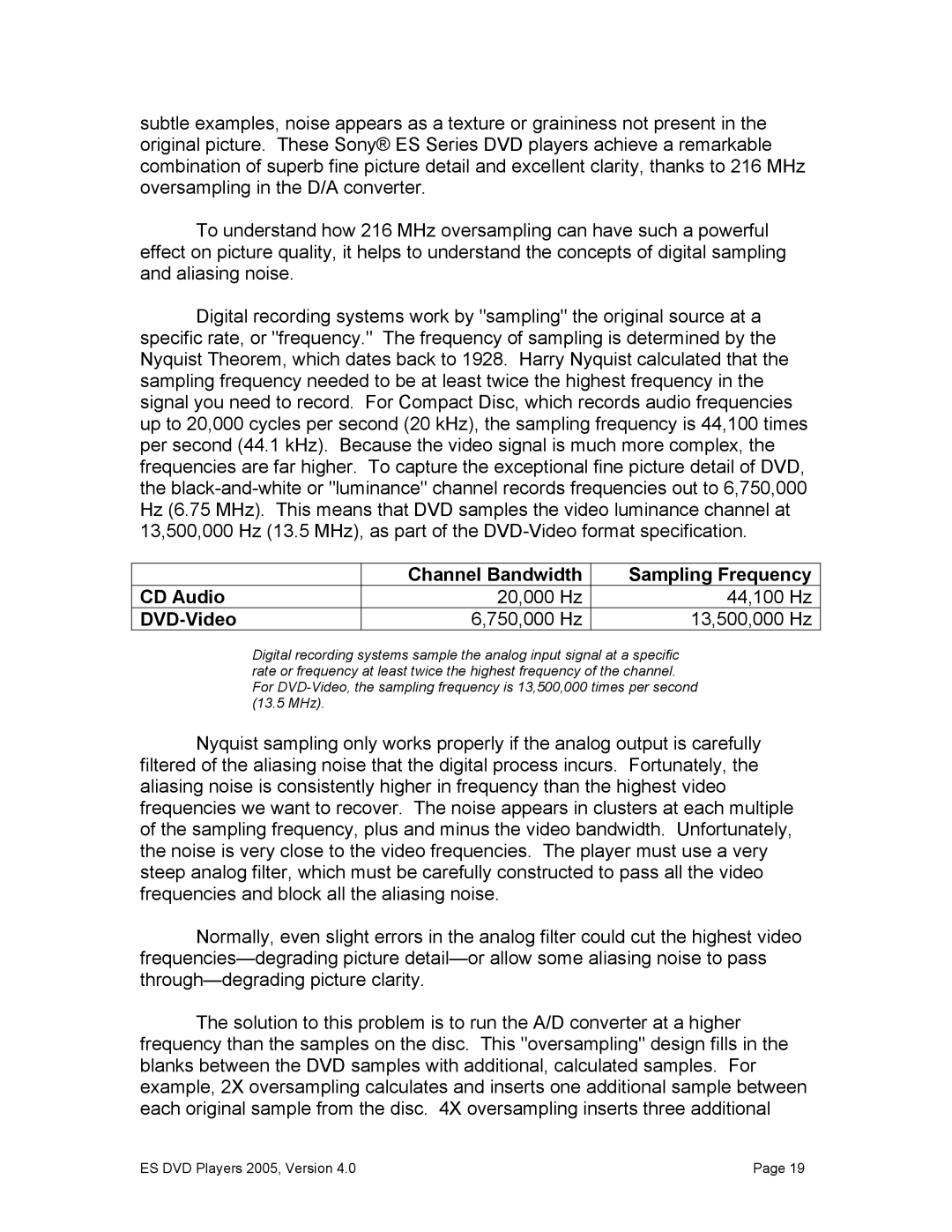subtle examples, noise appears as a texture or graininess not present in the original picture. These Sony® ES Series DVD players achieve a remarkable combination of superb fine picture detail and excellent clarity, thanks to 216 MHz oversampling in the D/A converter.
To understand how 216 MHz oversampling can have such a powerful effect on picture quality, it helps to understand the concepts of digital sampling and aliasing noise.
Digital recording systems work by "sampling" the original source at a specific rate, or "frequency." The frequency of sampling is determined by the Nyquist Theorem, which dates back to 1928. Harry Nyquist calculated that the sampling frequency needed to be at least twice the highest frequency in the signal you need to record. For Compact Disc, which records audio frequencies up to 20,000 cycles per second (20 kHz), the sampling frequency is 44,100 times per second (44.1 kHz). Because the video signal is much more complex, the frequencies are far higher. To capture the exceptional fine picture detail of DVD, the
| Channel Bandwidth | Sampling Frequency | ||
CD Audio | 20,000 | Hz | 44,100 | Hz |
| 6,750,000 | Hz | 13,500,000 | Hz |
Digital recording systems sample the analog input signal at a specific rate or frequency at least twice the highest frequency of the channel. For
Nyquist sampling only works properly if the analog output is carefully filtered of the aliasing noise that the digital process incurs. Fortunately, the aliasing noise is consistently higher in frequency than the highest video frequencies we want to recover. The noise appears in clusters at each multiple of the sampling frequency, plus and minus the video bandwidth. Unfortunately, the noise is very close to the video frequencies. The player must use a very steep analog filter, which must be carefully constructed to pass all the video frequencies and block all the aliasing noise.
Normally, even slight errors in the analog filter could cut the highest video
The solution to this problem is to run the A/D converter at a higher frequency than the samples on the disc. This "oversampling" design fills in the blanks between the DVD samples with additional, calculated samples. For example, 2X oversampling calculates and inserts one additional sample between each original sample from the disc. 4X oversampling inserts three additional
ES DVD Players 2005, Version 4.0 | Page 19 |
